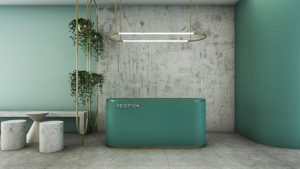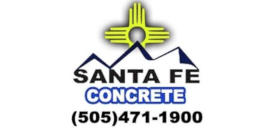Coloring Concrete Options: Concrete Overlay, Stains and Dyes
- admin
- Feb-16-2020
- colored concrete
 Typical gray concrete can leave areas of a property blending into its surroundings, making them boring and dull to look at. To draw some attention, or create a visual landmark, adding color to your concrete surfaces is a great way to catch someone’s eye and beautify a property. Combining colors can create a range of effects, from bold to serene. Applying a concrete overlay product on your home’s boring gray concrete surface are a fantastic way to change the look of your home’s concrete floors.
Typical gray concrete can leave areas of a property blending into its surroundings, making them boring and dull to look at. To draw some attention, or create a visual landmark, adding color to your concrete surfaces is a great way to catch someone’s eye and beautify a property. Combining colors can create a range of effects, from bold to serene. Applying a concrete overlay product on your home’s boring gray concrete surface are a fantastic way to change the look of your home’s concrete floors.
Concrete Overlay Color Charts Guidance
Almost all resurfacing material manufacturers provide a wide selection of concrete colors. From spray-down toppings, to skim coats and self-leveling overlays, there will be either color charts, to sample chips to narrow down your concrete color choice options. It is important to make sure you are using the charts that show what the color will look like with the exact product you are planning to use as color intensity may vary.
Pre-colored concrete overlay systems can be very helpful
Colors for surface toppings are typically accomplished by adding either liquid, or dry pigmentation. Luckily, some come pre-colored, so you don’t have to work so hard to get the shade just right with measuring out the pigment. This is also great because you can also be assured that the color will be consistent throughout. Most manufacturers who supply pre-colored options have a broad selection of standard colors, and some may even offer custom color matching.
You may decide to mix in your own pigment
There are some overlay systems that do not offer pre-colored options. In this case, you will have to mix in the liquid or dry pigments in for yourself. Manufacturers have tried to help make this easier by packaging the pigments in pre-measured quantities. This will ensure the colors consistency and accuracy by simplifying the dosing process. Some may offer formulas to help you achieve different hues within the range. For example, you may only add ⅓ of a cup of pigment to each bucket for a more subtle color, and an entire cup of pigment to create a much bolder statement. Others will have the exact amount packaged for you and ready to go, just add the entire amount provided and mix.
When you prepare to add your color to your overlay product, it is recommended that you proceed in this order. First, add the pigment into the liquid component you will be using (typically polymer or water) for your overlay product before you add the powdered component. Measure the right amount of liquid and put it in a bucket or something that can be used for mixing. Next, the pigment goes in. It is important to mix them together with a paddle mixer until the pigment is distributed evenly throughout the liquid before adding the powdered overlay component. Continue mixing until you achieve a smooth mixture to prevent streaks or clumps.
Iron-oxide pigments tend to clump during mixing. Liquid and dry form both clump, which is caused by large particles in the pigments. Some manufacturers will use a dispersing agent paired with a more finely ground pigment to aid the mixing process. This helps the pigments dissolve more thoroughly and have better color uniformity overall. If using water-dispersible pigments, it is possible to create a more unique marbleized effect. To do this, you can toss the pigments onto newly placed overlay, and then trowel it. If you desire a deeper quality in your color, consider combining the above methods by mixing the pigment both into the base mix, and onto the surface.
Experimenting with other topically applied concrete color systems
Using a skim coat or an overlay gives you the chance to get creative, starting with a fresh canvas to explore using things like stains and dyes. These options are particularly neat, since they have a little transparency, which offers a variety of unique looks you can create. You could choose this for a calmer marbleized look or use it as another layer to add depth to the method discussed above. You may also decide to layer them gradually to create a wave-like effect. Stains and dyes may also be used on integrally colored overlays to produce more layers of color.
Although water-based stains are increasing in use and popularity as a coloring method, acid-based stains continue to be the norm for staining cement overlays, because it etches itself into the surface. With water-based stains, you need to test the surface to make sure it is porous enough to take the stain in. The perks to using a water-based stain is that it leaves virtually no residue, and it is much easier to work with. These stains also come in almost unlimited color options. It is advised that you can improve your results by using a rotary floor buffer and a sanding screen to sand the surface prior to water-based stain treatment.
